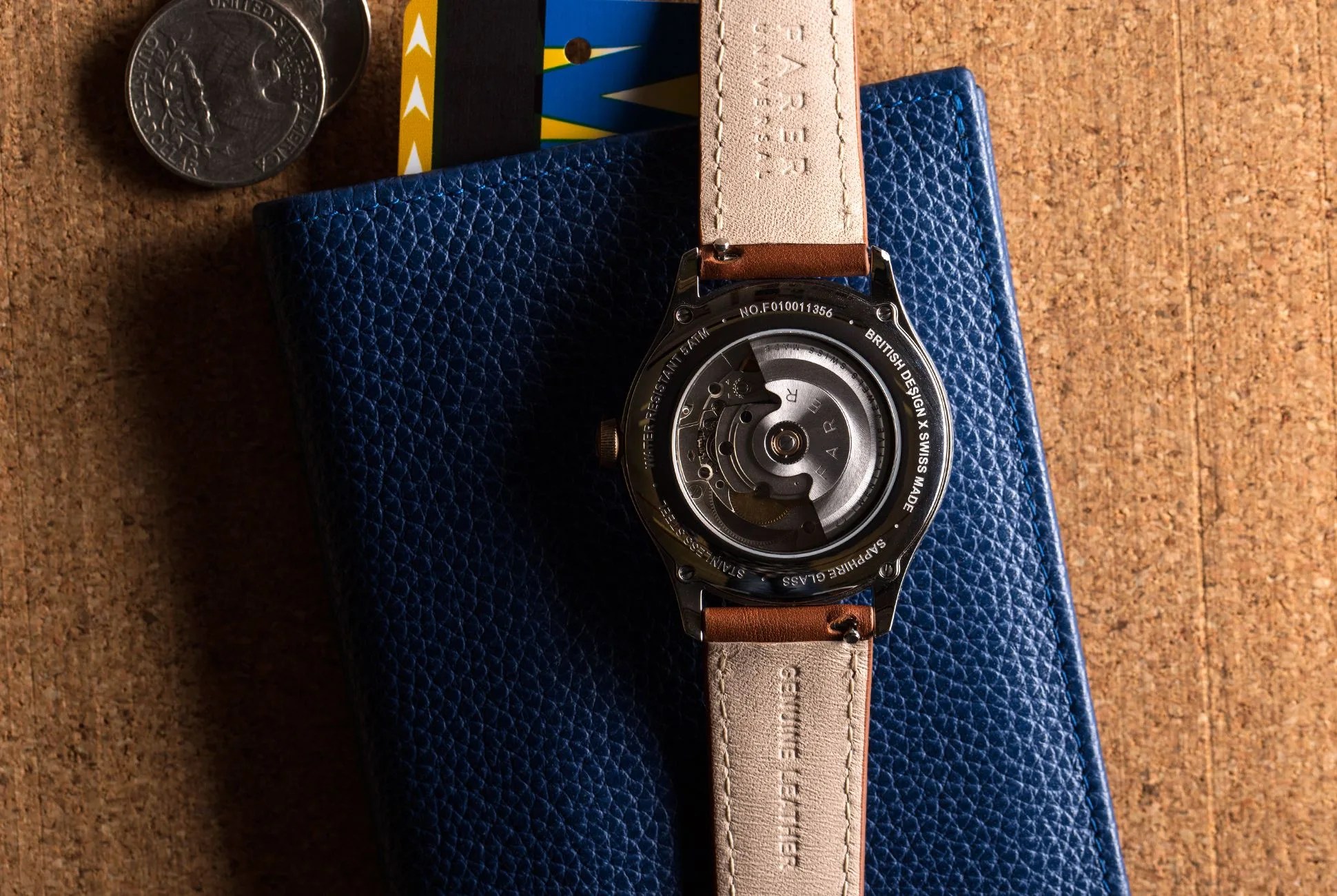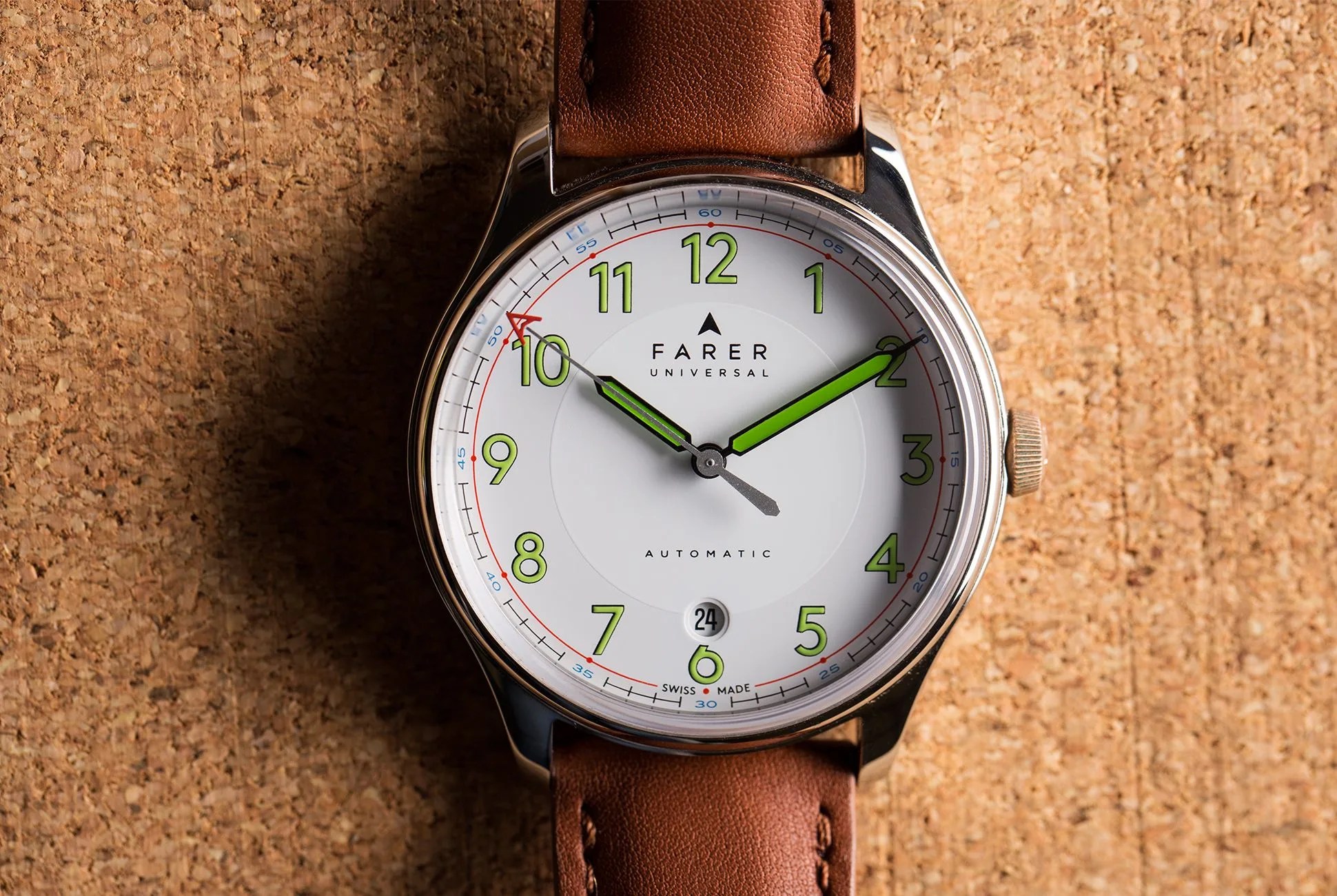At any given time, I’ll have a handful of eBay tabs open on Google Chrome: old cars and watches, mostly, and maybe the occasional road bike. Mind you, I don’t bid on anything, but I do like to feed my insatiable lust for old shit. Vintage speaks to me. Vintage looks interesting. And, at least in the case of watches, vintage has less luxury pretense. Old watches were smaller, they were simpler and they were, for the most part, necessary.
The great irony, of course, is that buying an old watch today is a frivolity, and watchmakers reissuing old designs into modern packages will happily charge a great deal for it. For example, when Rolex brought back the “Pepsi” design scheme of the original GMT, it made the watch in white gold and gave it a damn-near-$40,000 price tag. But if you do want something with old looks and a new construction, there is a young, scrappy watch brand with something to prove.
Farer, a young British upstart, debuted nearly a year ago with a range of several watches, all powered by either ETA or Ronda quartz movements and designed to mimic the look of watches from the 1960s. But according to company co-founder Paul Sweetenham, fans of the company’s designs began asking Farer to make an automatic mechanical watch not long after. Apparently, Farer wasted no time in fulfilling those requests; within a year they’ve debuted a range of three automatics — the Hopewell, the Endurance and the Beagle — all equipped with the venerable ETA 2824-2 movement.
I’ve spent over a week with the Beagle now, and I can see how they’ve factored in that ‘60s design ethos. The watch dial brings to mind field watches of the era — think Smiths expedition watches circa the 1950s, or the original Rolex Explorer. It’s the overprinted numerals that cinch the look. They pop out at you, adding definition to the dial, and the font is decidedly mid-century. Those numerals are encompassed by a red outer ring and thin black dashes indicating 60 minutes. Look closely at the outer edge of the dial and you’ll see that it ever so slightly curves downward. If there’s one knock against the dial, it’s that the date window cuts through the 6 o’clock numeral. Granted, if you look at an old Smiths watch, you’ll find a subdial cutting through the “6” as well, but in both cases, a more elegant solution may have been removing the “6” numeral altogether.
6 photos
The old-school vibes continue with the polished, shapely case. At 39.5mm in diameter, the Beagle hints at the smaller case sizes of yore. A vintage Smiths or Rolex would be somewhere in the ballpark of 33mm to 34mm. That’s far too tiny for most, but the reserved size of the Farer feels vintage without looking like a tiny white-and-green speck on your wrist.
It’s packed with other lovely touches as well. Take the red, arrow-tipped seconds hand or the domed, sapphire crystal (on its quartz watches, the crystal is merely sapphire-coated acrylic). And the crown? It’s made from a solid piece of brass that will patina over time. The spring bars holding the bridle-leather strap to the case feature a quick release system, so there’s no need to fiddle with a spring bar tool to swap different color straps. (You know who also does a quick-release strap system? Vacheron.)






